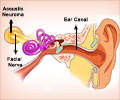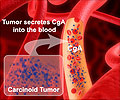
The work was conducted by researchers from Rice, the University of Texas MD Anderson Cancer Center and Northeastern University.
"We address aggressive cancers that cannot be efficiently and safely treated today," said Rice scientist Dmitri Lapotko, the study's lead investigator. "Surgeons often cannot fully remove tumors that are intertwined with important organs. Chemotherapy and radiation are commonly used to treat the residual portions of these tumors, but some tumors become resistant to chemoradiation. Quadrapeutics steps up when standard treatments fail. At the same time, quadrapeutics complements current approaches instead of replacing them."
Lapotko said quadrapeutics differs from other developmental cancer treatments in that it radically amplifies the intracellular effect of drugs and radiation only in cancer cells. The quadrapeutic effects are achieved by mechanical events -- tiny, remotely triggered nano-explosions called "plasmonic nanobubbles." Plasmonic nanobubbles are non-stationary vapors that expand and burst inside cancer cells in nanoseconds in response to a short, low-energy laser pulse. Plasmonic nanobubbles act as a "mechanical drug" against cancer cells that cannot be surgically removed and are otherwise resistant to radiation and chemotherapy.
In prior studies, Lapotko showed he could use plasmonic nanobubbles alone to literally blow cells apart. In quadrapeutics, his team is using them to detect and kill cancer cells in three ways. In cancer cells that survive the initial explosions, the bursting nanobubbles greatly magnify the local doses of both chemotherapy drugs and radiation. All three effects -- mechanical cell destruction, intracellular drug ejection and radiation amplification -- occur only in cancer cells and do not harm vital healthy cells nearby.
To administer quadrapeutics, the team uses four clinically approved components: chemotherapy drugs, radiation, near-infrared laser pulses of low energy and colloidal gold.
Advertisement
The first component of quadrapeutics is a low dose of a clinically validated chemotherapy drug. The team tested two: doxorubicin and paclitaxel. In each case, the scientists used encapsulated versions of the drug that were tagged with antibodies designed to target cancer cells. Thanks to the magnifying effect of the plasmonic nanobubbles, the intracellular dose -- the amount of the drug that is active inside cancer cells -- is very high even when the patient receives only a few percent of the typical clinical dose.
Advertisement
The third quadrapeutic component is a short near-infrared laser pulse that uses 1 million times less energy that a typical surgical laser. A standard endoscope delivers the laser pulse to the tumor, where the gold nanoclusters convert the laser energy into plasmonic nanobubbles.
Source-Eurekalert









